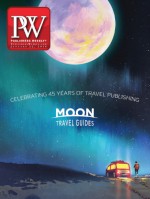A publishing success story that continues to receive mainstream (and industry) media attention is that of Rupi Kaur’s Milk and Honey. One wonders how many more profiles can be written of Kaur, though the story offers multiple angles: her work was first self-published, for example, and it’s a collection of poetry. Who reads and buys poetry anymore? Young people who use Instagram, it turns out.
Kaur started publishing her work on Tumblr in 2013, then moved to Instagram in 2014. That same year, she self-published a collection of her poetry on Amazon; soon, her popularity caught the attention of a traditional publisher. Milk and Honey has now sold more than a million copies and has been on the New York Times bestseller list for 52 consecutive weeks.
Do you suppose that Kaur, while she was writing and publishing her work for free, ever complained that “no one values poetry anymore”? Unlikely. But I hear that complaint about the value of the written word, in some form, every week, from all types of authors who believe literature is being devalued in our culture—whether by Amazon’s low prices, the huge quantity of written material now available for cheap or free, or all-you-can-read subscription plans such as Kindle Unlimited.
Early in the digital revolution of media and publishing, I discovered Kevin Kelly’s brilliant article “Better Than Free.” Kelly explains eight specific contexts in which something is “better than free.” Some of the most applicable to writers include personalization (e.g., signed author copies), immediacy (getting something in beta version or as soon as it is released), authenticity (a guarantee of an authorized high-quality version), accessibility (ease of use or access), and patronage (rewarding the creators we love).
It does little good for writers to complain to their readers or to the industry that their writing isn’t properly valued. Piracy isn’t something that people will be shamed into abandoning, or that will go away only if we put more effort toward stamping it out. Writers (and publishers, too) receive better rewards for their time and energy when they consider the packaging and context that can be charged for—and that people are happy to pay for.
We see through communities such as Wattpad, Tapas, or China Literature (and through Kaur) that there are readers of literature delivered digitally via mobile apps. Readers may not directly pay for the majority of that content or experience, but writers and publishers can still capture value from tips and donations, subrights and licensing, advertising, compilations and bundles, and (of course) traditional print sales.
In nonfiction, Instagrammers, bloggers, and podcasters produce volumes upon volumes of free digital content over the course of months and years that can then be curated and winnowed down into a single, cohesive book that people pay for, or into an annual event or online course or community.
When producing something for free, authors are opening the door to new fans. Instead of asking, “Will this cannibalize my sales?” or, “Am I giving too much away?” it’s much smarter to ask, “Will this lead to a new reader who will pay for something they value down the road?”
Many writers meet disappointment when they’re only one or two books into a career and find themselves constantly giving their work away because no readership has been developed yet and there is no demand for the work. At such a time, it can feel natural for them to blame readers and believe that their work isn’t valued. The truth most likely is that the work doesn’t yet hold any market value, or that the author hasn’t found the package or context that would offer value worth paying for.
There’s no question that market dynamics have changed and the supply of writing in the market today outpaces demand. The traditional value that a writer or publisher has provided—producing and packaging content or a story between two covers—is only one type of offering on today’s consumption spectrum, and not necessarily the most profitable or exciting one. While a book may carry the same appeal and value as it did 100 years ago to a certain segment of the market (particularly those who fetishize reading and books), it ignores a whole other group of readers who could be interested and nurtured if only authors think through what readers value in terms of experience or access.
Jane Friedman teaches digital media and publishing at the University of Virginia and is the former publisher of Writer’s Digest.



 Volume 265
Issue 4
01/22/2018
Volume 265
Issue 4
01/22/2018





